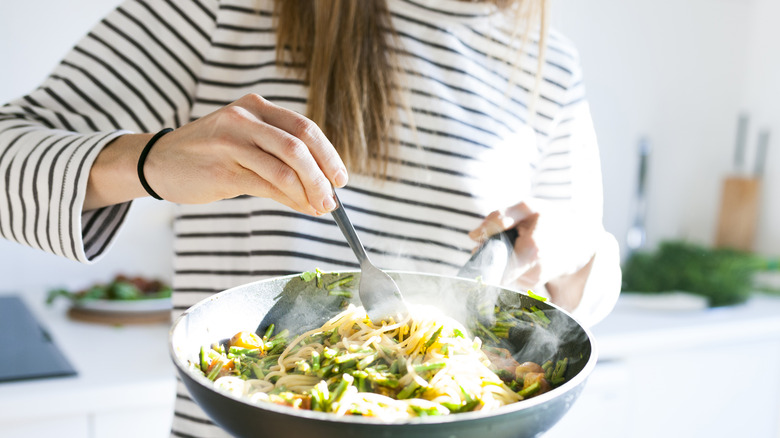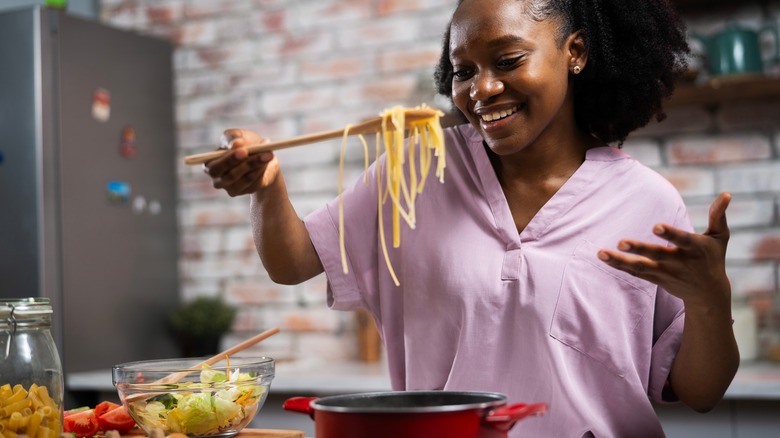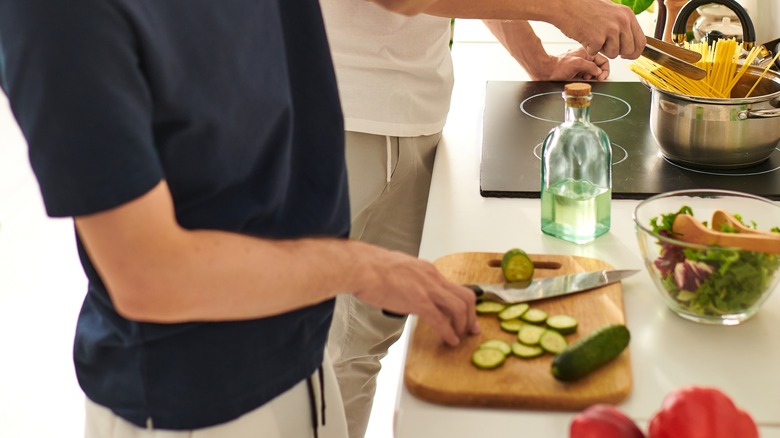“Should I eat pasta regularly?” It’s a question asked by many people who want to get the most nutritional value from every food or meal. Many pastas are carbohydrate-heavy but light in other nutrients. However, there’s a unique kind of pasta that contains tons of protein, as well as other “good stuff”: pasta made from chickpea flour. According to Healthline, a two-ounce serving of dried chickpea pasta contains 14 grams of protein. That’s twice the amount you’d find in the same amount of pasta made from white or wheat flour. It’s also more protein than the 6.4 grams that Healthline says you’ll find in a single egg.
But before you start substituting plates of chickpea pasta for omelets, there are a couple of things about chickpea pasta that Samar Kullab, a registered dietitian nutritionist, wants you to keep in mind. “It’s important to note that eggs are a complete protein, providing all essential amino acids, while chickpea pasta, as a plant-based protein, lacks some essential amino acids (specifically methionine and cysteine.)” The human body can make 11 out of the 20 amino acids that make up a protein, but relies on food sources for the remaining nine (per WebMD).
Another caveat: “The protein bioavailability of chickpea pasta may also be lower than that of animal-based proteins due to differences in digestibility.” The higher the bioavailability of a food, the more of its nutrients you absorb and store, via a 2020 study in Frontiers in Nutrition.
A thumbs-up food despite absorption considerations
With that said, regardless of the fact that chickpea pasta is an incomplete protein, it may still be worth incorporating into your diet because of its wide range of nutrients.
For example, Kullab notes that because chickpea pasta is high in fiber, it can help support gut and heart health — something very needed in the diets of the majority of people living in the United States. “Since only 5% of Americans meet the recommended daily fiber intake (25 grams for women and 38 grams for men), chickpea pasta can be a valuable addition to the diet,” she explains.
Kullab adds that chickpea pasta has a lower glycemic index than some other pastas. The glycemic index indicates how readily foods become sugars during digestion. Those that are lower can help stabilize and manage sugar counts. Consequently, if you’re doing your best to avoid sugar spikes and crashes or you’ve been told by a physician to watch your sugars because you’re prediabetic or diabetic, you may want to give chickpea pasta a try.
Foods that boost chickpea pasta’s nutritional profile
Kullab suggests eating chickpea pasta with other protein-rich foods to create a complete amino acid profile. For instance, consider partnering chickpea pasta with foods that contain lots of methionine and cysteine, both of which are lacking in chickpea pasta, according to Kullab. Some good choices are dairy products or plant-based items such as nuts, seeds, or other legumes.
Kullab even shares a favorite pasta salad recipe featuring chickpea pasta. The recipe calls for mixing six ounces of cooked chickpea pasta with half a diced red onion, a diced orange bell pepper, a diced jalapeno pepper (if desired), two diced cucumbers, half a cup of sliced cherry tomatoes, half a cup of kalamata olives, three cups of spinach, and half a cup of mozzarella balls. Once mixed, the salad can be drizzled with a dressing of a quarter of a cup of olive oil, a quarter of a cup of red wine vinegar, one tablespoon of Dijon mustard, two tablespoons of lemon juice, and one teaspoon each of garlic powder, oregano, and crushed red pepper. Sprinkle on another half teaspoon of salt and eat for a dish with a more complete protein profile.


